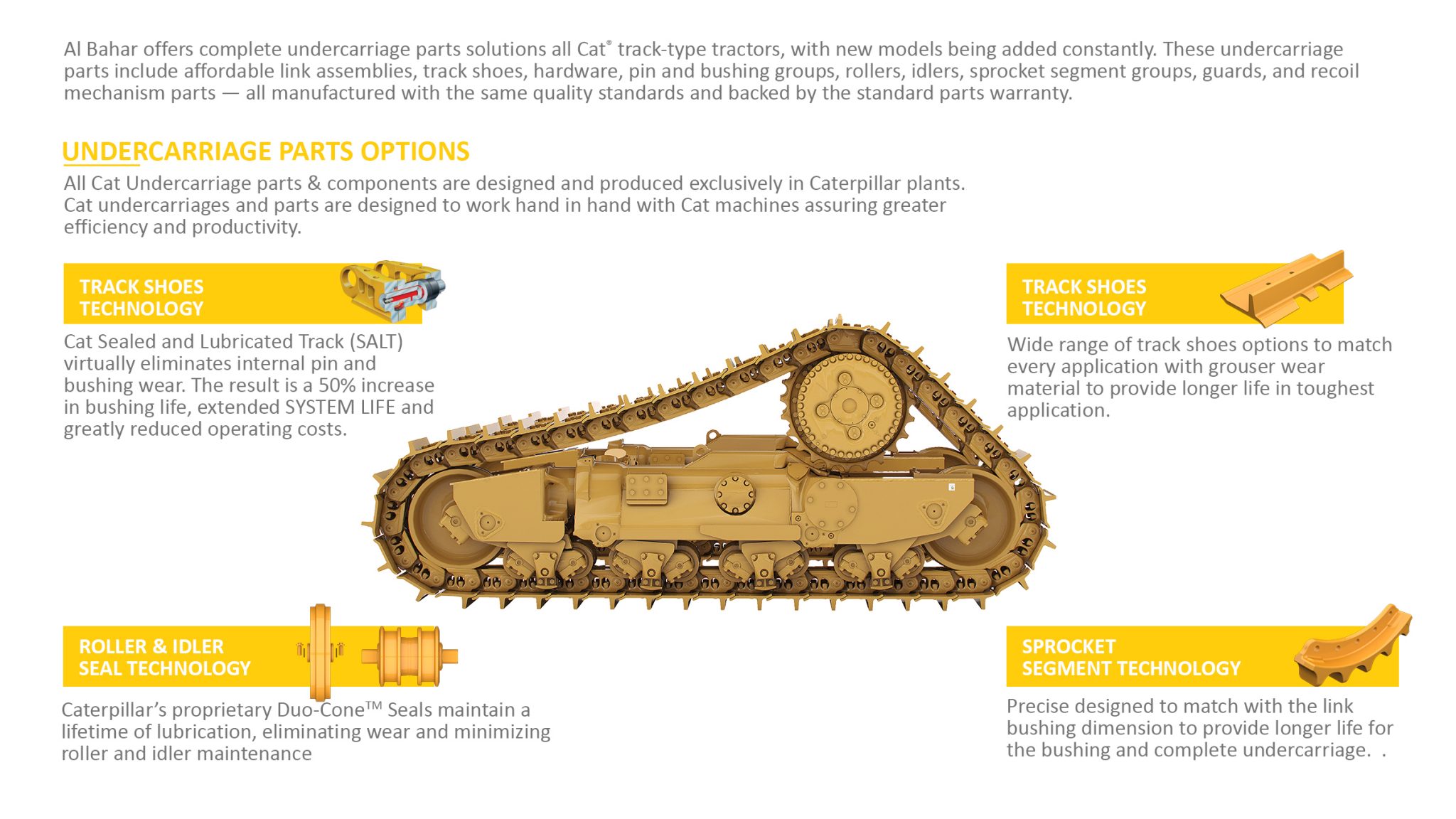From Sprockets to Idlers: The Complete Option for Trustworthy Undercarriage Parts
Wiki Article
Essential Overview to Undercarriage Parts for Heavy Tools
When it comes to heavy tools, the undercarriage plays an essential role in making sure efficient and smooth procedures. From track chains to idlers and rollers, each element adds to the general performance of the tools.Importance of Undercarriage Parts
Understanding the vital function that undercarriage components play in the performance and durability of heavy tools is vital for effective maintenance and procedure - undercarriage parts. The undercarriage components develop the foundation on which the whole device runs, supporting the weight of the tools, providing stability, and soaking up shock lots throughout operation. A properly maintained undercarriage not just ensures smooth operation however also contributes significantly to decreasing downtime and repair service expenses
The undercarriage includes various important parts such as track chains, track footwear, sprockets, idlers, rollers, and track structures. Each of these components plays an essential role in the total performance of the devices. The track chains and track shoes assist in providing grip and assistance, while the idlers and gears assist in driving the tracks smoothly. Regular evaluation, prompt maintenance, and replacement of worn-out undercarriage parts are critical to avoid break downs and optimize the life-span of the heavy tools. Basically, spending in top notch undercarriage components and guaranteeing their correct care is essential for optimal performance and sturdiness of heavy machinery.
Sorts Of Track Chains
Track chains are essential parts of heavy tools undercarriages, giving the needed grip and support for reliable operation. There are mostly 2 types of track chains used in hefty tools: sealed and lubed track chains (SALT) and dry track chains.
Function of Rollers and Idlers
Rollers and idlers play a vital role in sustaining and assisting the track chains of hefty tools undercarriages, adding to the overall security and effectiveness of the machinery. Idlers, on the various other hand, overview the track chain and aid preserve correct tension throughout the undercarriage system.With each other, rollers and idlers function in consistency to make certain that the track chain remains in place, also on harsh surface, enhancing the devices's efficiency and longevity. Appropriate upkeep and regular inspection of rollers and idlers are crucial to protect against premature wear and possible break downs, eventually making best use of the performance and lifespan of heavy equipment undercarriages.
Recognizing Gears

One critical facet of sprockets is ensuring proper placement and stress to prevent early wear and damages. Misaligned sprockets can cause uneven endure the track chain, resulting in lowered efficiency and prospective safety and security hazards. Routine upkeep and assessment of sprockets are vital to identify any kind of indications of wear or misalignment promptly.
Furthermore, sprockets come in various dimensions and tooth setups, depending upon the details heavy equipment and its desired use. Correct selection of gears based upon the tools's specs is essential to make sure optimum efficiency and long life of the undercarriage system. Understanding the duty of sprockets and their maintenance requirements is crucial for making best use of the effectiveness and life-span of hefty tools undercarriages.
Maintenance Tips for Durability
To make sure the long term durability and optimal performance of heavy devices undercarriages, thorough maintenance practices are essential. Routinely checking undercarriage parts such as track shoes, rollers, idlers, and sprockets for wear and tear is crucial. Correct track stress linked here modification is also crucial for lowering early wear on undercarriage components.Verdict
Finally, undercarriage parts are vital elements for heavy equipment, playing essential duties in keeping stability and functionality. Understanding the different sorts of track chains, rollers, sprockets, and idlers is necessary for correct maintenance and long life of the devices. By Full Report following upkeep ideas and on a regular basis inspecting and changing worn parts, operators can make certain the ideal performance and performance of their hefty machinery. Appropriate care and focus to undercarriage components are essential to optimizing devices life expectancy and productivity.The undercarriage consists of numerous important components such as track chains, track footwear, sprockets, idlers, rollers, and track frames. The track chains and track footwear aid in giving grip and support, while the idlers and sprockets help in driving the tracks efficiently (undercarriage parts). There are largely 2 types of track chains used in heavy equipment: secured and lubricated track chains (SALT) and dry track chains. Proper option and upkeep of track chains are vital to make sure the total performance and long life of heavy tools undercarriages
Gears are integral components of hefty equipment undercarriages, accountable for transferring power from the equipment to the track chain.
Report this wiki page